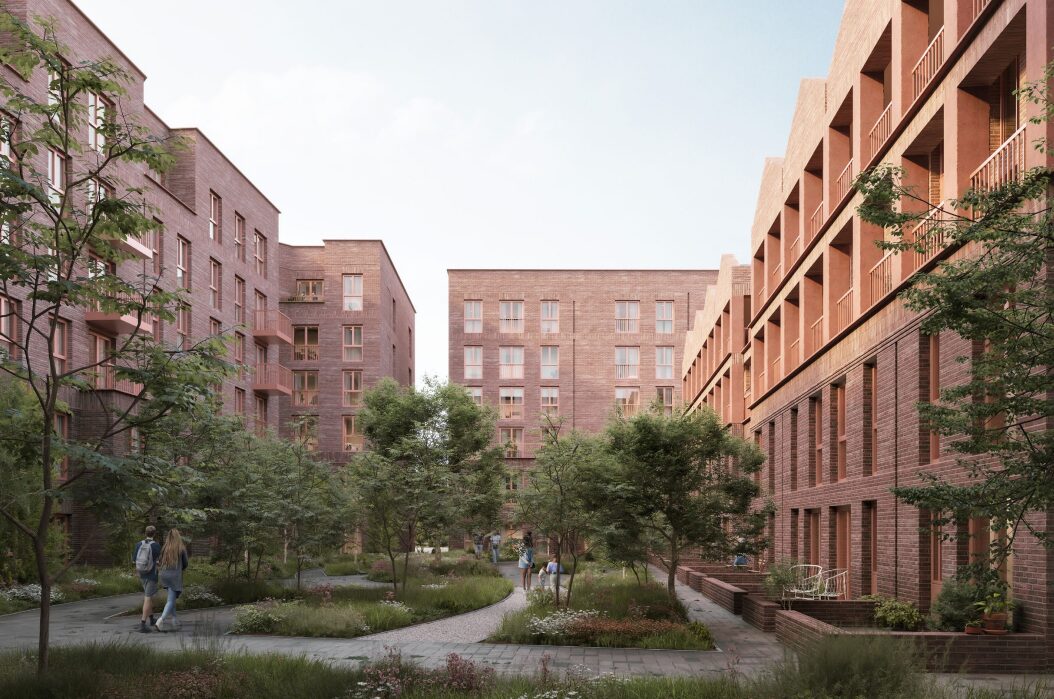Event Summary
Place RESI | Photos and summary
Terrifying housing targets, viability issues, and the need to do things differently – those were the words on everyone’s lips at Place North West’s 2024 Resi Update.
Place RESI was sponsored by WSP, Northstone, Hope Architects, Trowers & Hamlins, Onward Homes, Roma Finance, Yardi and J3 Advisory. Scroll to the bottom of the story for the event photo gallery.
Scroll to the bottom of the story for the event photo gallery.
Unachievable or ambitious?
A poll showed 98% of delegates at Place RESI think the government’s target of 1.5m new homes is unattainable, with suggestions by Dan Whelan, deputy editor at Place North West, that a sluggish planning system, stalled sites, and viability gaps were contributing factors.
Suzanne Benson, partner and head of real estate at Trowers & Hamlins, said: “The government came straight out and focused on planning and PRS reform. There’s a lot of emphasis on how local authorities can support development, the reinstatement of targets and the five-year land supply has created a lot of chat. Outside of London there are over 200 local authorities who need to increase their targets – 63 need to double their output – that’s a massive challenge.”
On GM’s 75,000 homes target, Mayor Andy Burnham said: “If we all, across our 10 boroughs, pull together then yes [it’s achievable]. We’ve done the hard stuff that others haven’t. We’ve gone through Places for Everyone and that allocates a lot of the land that’s needed.”
He also said he would be asking the Treasury to transfer land not needed by Whitehall to give the “social housing uplift”. He also raised concerns about the 10 GM authorities’ spend on temporary accommodation – £75m a year – and put it into the wider context of health and jobs: “You can’t do anything without the foundation of a good home.”
Laura Blakey, director of strategic finance and investment at GMCA, said: “It’s a significant stretch. It’s not only the supply, but the standard. We’ve got to have the ambitious target – we are all very aware of the housing crisis, particularly when we look at the amount that is being spent on homeless accommodation – it’s there out of need.”
Travelling forwards
Fresh from a trip to Germany where he said he’d had a “successful trade mission”, Burnham said one of the barriers to building more homes is skills and referenced the new Greater Manchester Baccalaureate.
He added: “We need to bring through a new generation to work in construction. Hence our big reform of technical education.”

Andy Burnham said Greater Manchester should be ‘dead proud’ of what it has achieved in recent years. Credit: PNW
He also discussed funding changes from government, coming into force from April, which will mean GM no longer needs to account for individual financing in areas such as transport and housing, and will instead have the spending freedom of Scotland and Wales.
Burnham also discussed transport and his ambitions to bring eight new rail lines into the Bee Network, focussing on commuter lines to Buxton, Glossop, Hoole, Southport and Wigan, with a new station at Golborne. He also wants to persuade Network Rail to devolve some of the stations and land around them to open up “really exciting opportunities”.
Asked by Whelan about his relationship with the new government, he said: “I get more access now. There are more conversations going on.”
But he cautioned: “If they don’t back the Bee Network, I will call that out. Why can’t people here have London-level transport?”
Manchester’s market
Benson said: “What Manchester does, largely because of the make up of the businesses, is react strongly [at times of economic volatility]. In good times we outperform, but in bad times we go down more. The good news is that Manchester is back outperforming the national economy.”
She said the city is heavily reliant on retail and on service providers, and seeing a modest upturn in construction. “That matters because we are not building homes in isolation,” she said. “In that economy, who’s going to need the homes we’re building? Where do they want and need to live so they can work and enjoy their lives – and what can they afford?”
Co-living choice
Jermaine Browne, co-founder of Re:shape Living, was quizzed about his firm’s plans for a co-living scheme in Salford, designed as single-person accommodation which is aimed at those who don’t want traditional shared accommodation, but can’t afford to rent a build-to-rent apartment or buy a property.
He said co-living tries to give a “hospitality type” experience with twice the room size of the traditional, plus co-working space, and tagged it as “a penthouse for everyone”: “What you’re doing is creating an aspirational product that’s more affordable than other options.”

The first panel provided insight into the challenges and opportunities the private sector is facing. Credit: PNW
Viability challenges
“The regional towns are very challenging and not viable for us,” said Guy Butler, co-founder of Glenbrook, though he acknowledged this wasn’t the case for all developers. He said Glenbrook is concentrating on Manchester, Salford, Trafford, Leeds city centre, Liverpool, Birmingham, Milton Keynes, and Bristol.
He said viability was “almost impossible” in Liverpool but added: “We have funders who want to fund in Liverpool – it’s build costs, finding contractors, and it’s marginally more expensive to build in Liverpool than it is in Manchester because of availability of skills.”
Browne said differing build costs definitely made them focus on cities where their target demographic was already living, but developments have to be where the prices stack up.
Sandy Livingstone, executive director of property for Onward Homes, said there was a difficult balance to strike between retrofit and building new homes: “Through the last 14 years of austerity we’ve lost 20% of the capacity to fund. We’ve got ageing housing stock so we need to be able to improve the quality of these homes and accelerate the rate at which we do that.”
Rebecca Coley, head of planning and development for Trafford Council, would like to see government intervention on “ultra densification”.
“It’s very difficult to reconcile viability against a scheme that should get planning permission. If we’re building homes for the future they’ve got to be great living environments. If that’s all the market will push out in terms of land value, that’s a massive concern. We don’t want to be a blocker but we want the best for the residents of Trafford.”
Doug Hann, director of WSP, said: “Many of the schemes we’re involved in around town centre regen face significant challenges. Developers have to get planning permission and then look at the cocktail of funding solutions, whether it’s heritage, brownfield land, or Homes England funding. It needs collaboration because in many cases boundaries need to be pushed in order to get viability.”
The Grey Belt
Coley expressed concerns about this new-ish terminology, as she fears applications will get tied up in planning appeals and court cases but she added: “There is definitely an argument for releasing less good quality Green Belt.”
Thinking differently
Whelan challenged the panellists to predict the changes needed to meet the government’s 1.5m housing target. Phil Cooper, director at Hope Architects, is focused on density: “We need to use land more efficiently and we need to spread what we’re doing across the market more effectively. We don’t have dense cores to our suburban developments, we don’t have medium-density infills in the urban centres that surround the city centre.
“People are talking about ‘mansion blocks’. What do you want if you don’t want a city centre high-rise flat or a suburban executive home? We’ve got an opportunity here to think about what those typologies look like. What is modern living supposed to look like.”
Syreeta Bayne, head of social value and sustainability for Muse, put a strong focus on life-changing aspects of development, highlighting areas with fuel poverty issues, or high incidences of health problems.
She also talked about locating homes in nature, and emphasised a “holistic approach” around transport, employment and education. She also said: “Think about the cultural dimensions of places. We are starting Bradford City Village, research has shown there are a lot of multi-generational homes and that needs to be considered through the design so that no one is displaced.”

The industry must think differently to overcome today’s challenges, according to participants on the event’s third panel. Credit: PNW
Livingstone said: “We need to change the way we build. We’ve got to think about manufacturer-led construction.”
Justin Harley, director at Yardi, says one thing the industry can do better is adopt technology more quickly: “How much space do people need; use data to make better investment decisions. We specialise in rental living. People fixate on what technology the resident needs – they don’t care, they just want it to work. Often, it’s not the ‘sexy’ stuff – it’s stuff that makes you operationally efficient. In residential, it’s transactional, like collecting rent, paying rent and signing leases.”
Shannon Conway, co-founder at Picture This, detailed her company’s first scheme in Stockport and said: “Before you build anything, go and find out what people in those areas need. The cookie cutter approach where you lift and shift and find ‘oh, it’s not viable’ – well that’s because you haven’t done your research. We’re building lifetime homes, homes people can grow older in. Think about people being able to adapt it as their needs change and that will shave millions off the NHS bill.”
Whelan asked Jarod Kelly, land and partnerships manager for Northstone, about his company’s claim they develop the “new, new build”. He replied: “Our house type is a block that extends by two bricks forward, two bricks back. The names of the properties are defined by the square foot so everyone knows what they’re buying into. We’re going Future Homes Standard right from the off-set – triple glazed windows, all homes built to brick dimensions so there’s no waste and we take pride in the surrounding area. We want the amenity space and the transport and access to give quality of life.”
What’s next?
Join Place North at one of our upcoming events:
Place North Question Time | 5 November
Life Sciences Update | 7 November
Liverpool City Region Development Update | 14 November
Click any image to launch gallery
























































Homelessness continues to spiral in GM and yet the focus of the Mayor continues to be on giving soft loans to developers building out unaffordable towers in Manchester. Go figure.
By Anonymous
“Go figure” – Ok. Providing financial help to deliver more homes appears a reasonably logical and common-sense step towards reducing homelessness.
Aware that a lot of these new homes are expensive but new homes have always been expensive. Homes get cheaper over time relative to incomes and the wider market. The older housing stock which is now considered affordable to many was once newbuild and expensive as well.
In a country which more or less prohibits councils from building their own social housing, the private route is all we have left. You can’t blame Burnham for ‘playing the game’ and making it easier for these developers to build homes. The alternative is no new homes, rising rents/house prices and… yep: increased homelessness.
By Anonymous
New homes were much cheaper in past because they were only 3 times income and deposit was lower.Now they are 6 0r 7 times income and rising and deposit is much larger amount of money.And this is only going to get worse with a larger population.So building expensive homes is not a measure to increase housing supply it is in fact a deliberate policy to suppress the amount of affordable housing because you don’t increase the supply
By Anonymous